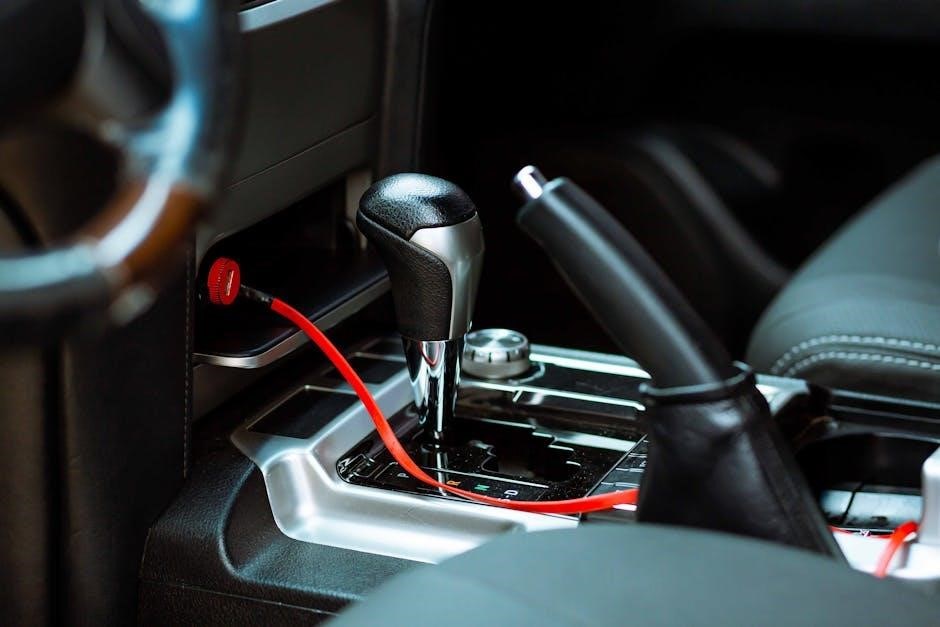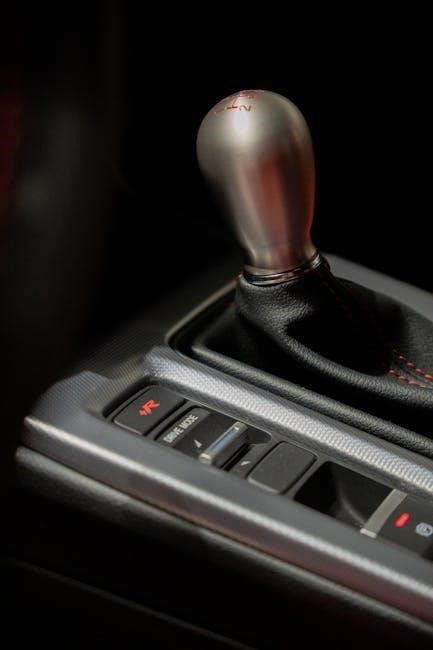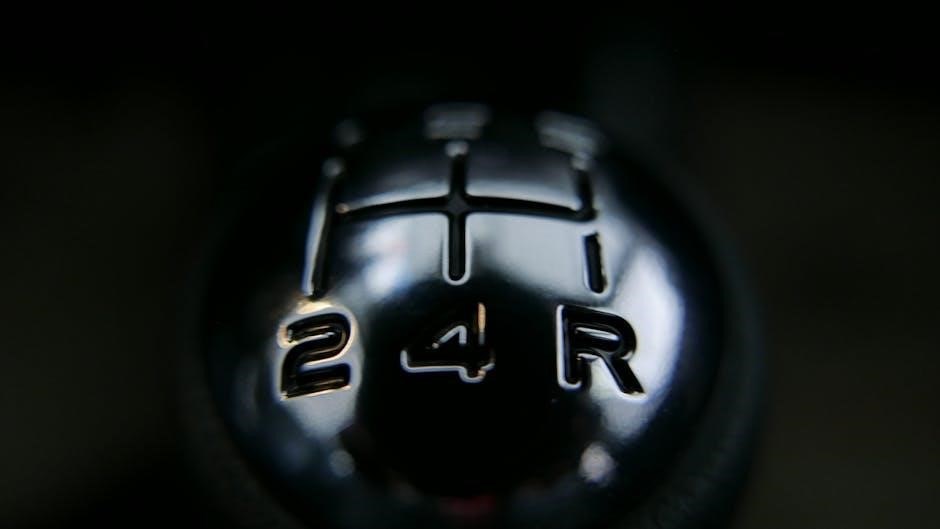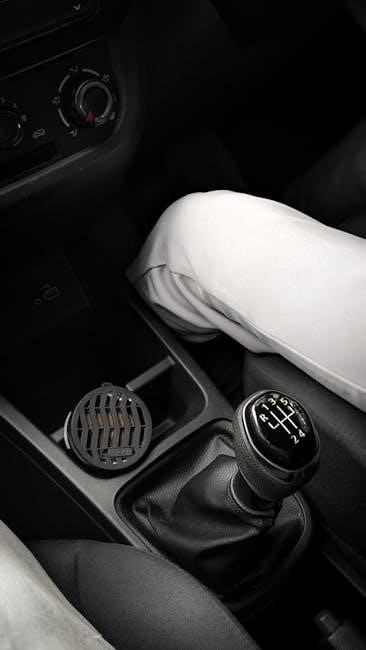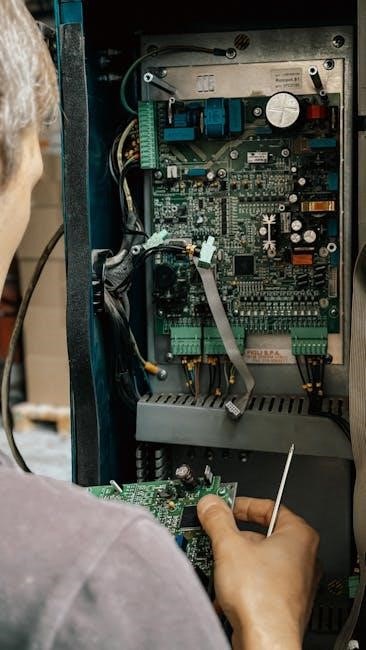Weber Spirit E-310 Gas Grill Manual: An Overview
This manual provides essential guidance for Weber Spirit E-310 owners, covering setup, operation, maintenance, and troubleshooting․
Download the Weber Grills App for assistance!
The Weber Spirit E-310 is a popular LP gas grill known for its reliability and ease of use․ This grill offers a fantastic entry point into the world of Weber quality․
Before operation, carefully read this owner’s guide to ensure safe and enjoyable grilling experiences․
The Spirit E-310 boasts features designed for convenience, and the Weber Grills App provides digital support․
Common searches include Genesis and Summit models, but precise model numbers like 6511001 are crucial for finding specific information․
Key Features of the E-310 Model
The Weber Spirit E-310 features three stainless steel burners, providing substantial cooking power․ It includes porcelain-enameled cast iron cooking grates for excellent heat retention and even cooking․
Flavorizer bars shield the burners, vaporizing drippings for enhanced flavor․
This model offers convenient features like an integrated ignition system and easy-to-clean grease management․
The Weber Grills App assists with setup and provides grilling guidance․ Access to a downloadable PDF manual is readily available online․

Safety First: Important Precautions
Always read the owner’s guide before operation! If you smell gas, shut off the appliance and extinguish any open flames immediately for safety․
Gas Leak Detection and Prevention
Regularly inspect the gas tank, hose, and regulator connections for damage or wear before each use․ Utilize a soapy water solution to check for leaks – bubbles indicate a problem․
Ensure proper gas tank installation and a secure connection to the regulator․
If a gas leak is suspected, immediately shut off the gas supply at the tank and do not operate the grill․
Never use a flame to locate leaks․ Store the gas tank outdoors in a well-ventilated area, away from heat sources․
Proper Ventilation Guidelines
Always operate the Weber Spirit E-310 grill outdoors in a well-ventilated area, away from structures and combustible materials․ Maintain a minimum clearance of 36 inches on all sides and above the grill․
Never use the grill inside a garage, shed, or enclosed space, as this can lead to carbon monoxide buildup․ Ensure adequate airflow to support combustion and prevent gas accumulation․ Be mindful of wind direction to avoid smoke blowing towards people or buildings․
Safe Grilling Practices
Prioritize safety when using your Weber Spirit E-310․ Never leave a lit grill unattended․ Keep children and pets at a safe distance․ Use long-handled grilling tools to avoid burns․
Always ensure the lid is open when lighting the grill, and avoid leaning over it during operation․ If a grease fire occurs, immediately turn off the burners and close the lid․ Never use water to extinguish a grease fire․

Setting Up Your Weber Spirit E-310
Proper setup involves unboxing components, securely installing the gas tank, and correctly connecting the gas regulator for safe and efficient grilling․
Unboxing and Component Identification
Carefully unpack your Weber Spirit E-310, verifying all listed components are present․ These include the grill body, cooking grates, flavorizer bars, burners, grease tray, side shelves, and hardware․
Refer to the manual for a detailed parts diagram; Inspect each item for shipping damage before assembly․
Proper identification of each component is crucial for a smooth and correct setup process, ensuring optimal performance and longevity of your new grill․
Gas Tank Installation
Connect a standard 20lb propane tank to the Weber Spirit E-310, ensuring the valve is fully closed․ The manual details proper connection procedures․
Never use a damaged tank or attempt modifications․ Position the tank securely, away from heat sources, following all safety guidelines․
The Weber Grills App offers guidance․ Double-check connections for leaks before lighting the grill – a crucial safety step!
Connecting the Gas Regulator
Attach the gas regulator firmly to both the propane tank valve and the grill’s gas supply connection․ Ensure a snug fit, hand-tightening only – do not use tools․
The Weber Spirit E-310 manual emphasizes checking for leaks after connection․ Use a soapy water solution to test all joints․
The Weber Grills App provides visual aids․ A secure regulator connection is vital for safe and efficient grilling․
Operating Instructions
Follow the Weber Spirit E-310 manual for lighting, burner adjustments, and preheating․ The Weber Grills App offers step-by-step guidance for optimal grilling․
Lighting the Grill
Refer to your Weber Spirit E-310 manual for precise lighting instructions; Initially, fully open the grill lid․ Then, open the propane tank valve․ Next, turn one burner control knob to the “High” position and promptly press the igniter button․
If the grill doesn’t light within ten seconds, turn off the burner and wait five minutes before attempting again․ The Weber Grills App provides visual aids․ Always ensure proper gas connection and ventilation before lighting․
Adjusting Burner Control Knobs
The Weber Spirit E-310 features individual burner control knobs for precise temperature management․ Rotate knobs clockwise to increase flame height and heat, and counterclockwise to decrease․ Refer to your manual for specific heat settings for various cooking methods․
Start with a lower setting and gradually increase as needed; The Weber Grills App offers suggested knob positions for different foods․ Always allow sufficient preheating time after adjusting the burners for optimal cooking results․
Preheating the Grill
Preheating your Weber Spirit E-310 is crucial for successful grilling․ After lighting the burners, close the lid and allow the grill to heat for 10-15 minutes․ This ensures even heat distribution across the cooking surface․
Utilize the Weber Grills App for preheating guidance specific to your model․ A properly preheated grill sears food effectively and prevents sticking․ Check the grill’s thermometer to confirm it has reached the desired temperature before cooking․

Cooking with Your Weber Spirit E-310
Master direct and indirect cooking methods with your E-310․ The Weber app offers grilling assistance, and recommended temperatures for various foods are available․
Direct vs․ Indirect Cooking Methods
Direct cooking on your Weber Spirit E-310 involves placing food directly over the heat source, ideal for searing steaks, burgers, and quick-cooking items․ Indirect cooking utilizes the grill’s heat circulation, similar to an oven, perfect for larger cuts like roasts or poultry․
To achieve indirect heat, ignite burners on one side of the grill, leaving the center empty․ This creates a cooler zone for slower, more even cooking․ Utilizing both methods expands your culinary possibilities, ensuring perfectly cooked meals every time․ The Weber app can guide you!
Temperature Control Techniques
Mastering temperature control on your Weber Spirit E-310 is key to grilling success․ Adjust burner control knobs to regulate heat output, achieving desired cooking temperatures․ Utilize the grill’s lid thermometer as a guide, but consider investing in an instant-read thermometer for precise internal food temperatures․
Experiment with burner combinations for varied heat zones․ Lowering the lid helps retain heat, while venting it allows for cooler temperatures․ The Weber Grills app offers suggested temperatures for various foods, simplifying the process!
Recommended Cooking Temperatures for Different Foods
Achieving perfectly cooked meals with your Weber Spirit E-310 relies on proper temperatures․ For searing steaks, aim for high heat (450-550°F)․ Poultry benefits from medium heat (350-450°F) for even cooking․ Delicate fish requires lower temperatures (250-350°F) to prevent drying․
The Weber Grills app provides specific temperature recommendations for numerous dishes․ Remember these are guidelines; always use a meat thermometer to verify internal doneness for food safety and optimal flavor!
Cleaning and Maintenance
Regular cleaning extends your Weber Spirit E-310’s life․ Empty the grease tray, clean grates, and burners to ensure optimal performance and safety․
Cleaning the Grill Grates
Maintaining clean grill grates is crucial for flavorful cooking and preventing food buildup․ After each use, burn off residue on high heat for fifteen minutes․
For a deeper clean, remove the grates and scrub them with a grill brush – ideally a stainless steel one for stainless grates․
Avoid abrasive cleaners that could damage the surface․
Alternatively, wrap grates in newspaper and let them sit overnight to loosen debris, then scrub․
Regular cleaning ensures optimal heat transfer and extends grate lifespan․
Emptying the Grease Tray
Regularly emptying the grease tray prevents flare-ups and potential fire hazards․ After each grilling session, or when the tray appears full, carefully remove it from the grill․
Dispose of the cooled grease responsibly – never pour it down the drain!
Line the tray with aluminum foil for easier cleanup, replacing the foil after each use․
Periodically wash the tray with warm, soapy water to remove stubborn residue․ A clean grease tray contributes to safer and more enjoyable grilling․
Cleaning the Burners
Periodically cleaning the burners ensures optimal performance and even heat distribution․ Turn off the gas supply and allow the grill to cool completely before beginning․ Remove the cooking grates and flavorizer bars to access the burners․
Use a wire brush to gently clean the burner ports, removing any debris or obstructions․
Inspect the burners for damage and replace if necessary․ Reassemble the grill carefully, ensuring proper burner alignment․

Troubleshooting Common Issues
Common problems like lighting failures, uneven heating, or gas smells are addressed in this section․ Refer to the manual for solutions and safety precautions․
Grill Not Lighting
If your Weber Spirit E-310 fails to ignite, first ensure the gas tank is full and properly connected․ Verify the igniter button clicks and produces a spark․
Check for obstructions in the burner tubes․ If the igniter doesn’t spark, replace the battery․
Also, confirm the burner control knobs are set to the ‘High’ position before attempting ignition․
If issues persist, manually light the burner with a long match, following the manual’s safety instructions․
Uneven Heating
If experiencing uneven heating on your Weber Spirit E-310, ensure flavorizer bars are correctly positioned, directing heat evenly across the cooking grates․
Check for obstructions within the burner tubes, like debris or insect nests, hindering gas flow․
Also, verify the burners are clean and free of rust or corrosion․
Confirm the grill is level to ensure consistent heat distribution․
Adjust burner control knobs to balance heat output across different zones․
Gas Smell Persists
If a gas smell persists despite following initial safety steps (shutting off gas, extinguishing flames), do not attempt to relight the grill․
Immediately disconnect the gas tank and move the grill to a well-ventilated area․
Check all gas connections – regulator, hose, and tank valve – for tightness․
Inspect the hose for cracks or damage․
Contact a qualified gas appliance technician for inspection and repair; do not use the grill until it’s deemed safe․

Understanding the Weber Spirit E-310 Components
The E-310 features burners for heat, cooking grates of varying materials, and flavorizer bars that vaporize drippings for enhanced flavor․
Burners and Heat Distribution
The Weber Spirit E-310 utilizes stainless steel burners designed for consistent and reliable heat output․ These burners are strategically positioned to ensure even heat distribution across the cooking surface․
Proper burner function is crucial for optimal grilling performance․
Regular cleaning prevents clogging and maintains efficient gas flow․
Consistent heat is achieved through the design and placement of these components, allowing for versatile cooking methods․
Understanding burner operation is key to mastering temperature control and achieving perfectly grilled results․
Cooking Grates Materials
The Weber Spirit E-310 typically features porcelain-enameled cast iron cooking grates․ This material provides excellent heat retention, ensuring consistent cooking temperatures and beautiful sear marks․ Porcelain enamel also offers corrosion resistance, extending the lifespan of the grates․
Cast iron’s durability and heat conductivity are key benefits․ Regular seasoning helps maintain the porcelain coating and prevents food from sticking․ Proper cleaning, after each use, is vital for preserving grate quality and performance․
Flavorizer Bars Functionality
Flavorizer bars, positioned above the burners on the Weber Spirit E-310, vaporize drippings before they reach the burners․ This process creates flavorful smoke, enhancing the taste of your food and preventing flare-ups․ They shield the burners from direct contact with food particles, extending their lifespan;
These bars are crucial for achieving that signature Weber smoky flavor․ Regular inspection and cleaning are essential to ensure optimal performance; Replace them when they become heavily corroded or damaged for continued grilling success․

Weber App Integration
Utilize the free Weber Grills App! Register your Spirit E-310 for customized grilling assistance, from gas tank setup to first cookout guidance․
Downloading and Installing the Weber Grills App
To enhance your grilling experience, download the Weber Grills App from your device’s app store (iOS or Android)․ Search for “Weber Grills” and select the official app․
Once downloaded, open the app and follow the on-screen instructions to create an account or log in if you already have one․ The app is designed to be user-friendly and intuitive, guiding you through each step of the process․ Ensure your device has a stable internet connection during installation and initial setup․
Registering Your Grill in the App
After logging into the Weber Grills App, navigate to the “My Grills” section․ Select “Add Grill” and choose the Spirit E-310 from the list of Weber models․
You’ll be prompted to enter your grill’s model number and potentially the date of purchase․ This information allows the app to provide tailored support, recipes, and troubleshooting tips specific to your E-310․ Registering unlocks personalized features and ensures you receive relevant updates and assistance․
Utilizing App Features for Grilling Assistance
The Weber Grills App offers step-by-step guidance for Spirit E-310 operation, from gas tank installation to lighting the grill․ Access a library of recipes optimized for your model, with precise cooking times and temperature settings․
Utilize the timer function to ensure perfect results, and receive notifications when your food is nearing completion․ The app also provides troubleshooting tips and connects you to Weber’s support resources, maximizing your grilling experience․

Finding Replacement Parts
Locate genuine Weber replacement parts using your Spirit E-310 model number․ Weber parts retailers and the official Weber website are key resources․
Identifying Model Numbers
Accurately identifying your Weber Spirit E-310’s model number is crucial for ordering the correct replacement parts and accessing specific documentation․ The model number is typically found on a sticker located inside the grill’s side table or on the grill’s body․
Common search terms like “Genesis” or “Spirit” can yield broad results; using the precise model name – Spirit E-310 – or a full model number (like 6511001) ensures you find the exact components needed․ This prevents compatibility issues and streamlines the repair process․
Locating Weber Parts Retailers
Genuine Weber replacement parts are readily available through several channels․ The official Weber website is a primary source, offering a comprehensive catalog and direct ordering․ Additionally, authorized Weber retailers – both brick-and-mortar stores and online vendors – stock a wide range of components for the Spirit E-310․
Major home improvement stores often carry common Weber parts․ Searching online using the specific part number will reveal numerous retailers․ Always verify the retailer’s authenticity to ensure you receive genuine Weber quality․
Ordering Replacement Components
When ordering replacement parts for your Weber Spirit E-310, having the model number is crucial for ensuring compatibility․ Weber’s website allows direct ordering with secure payment options and shipping․ Authorized retailers also facilitate online and in-store purchases․
Double-check part numbers before finalizing your order to avoid errors․ Keep your purchase receipts for warranty claims or returns․ Weber frequently updates its parts catalog, so utilizing their official resources is recommended for the most accurate information․

Warranty Information
Weber offers a standard grill warranty, protecting against defects in materials and workmanship․ Review the terms and claim process detailed in your manual․
Weber’s Standard Grill Warranty
Weber stands behind its products with a comprehensive standard grill warranty․ This coverage typically includes the grill’s stainless steel components for a period of ten years against through-rust, and other parts for a period of two years from the date of original purchase․ The warranty protects against defects in materials and workmanship under normal residential use․
It’s crucial to register your Weber Spirit E-310 to ensure seamless warranty service․ Damage caused by accidents, misuse, or unauthorized modifications isn’t covered․ Keep your proof of purchase readily available for any warranty claims․
Warranty Claim Process
To initiate a warranty claim for your Weber Spirit E-310, first, gather your original proof of purchase and the grill’s model and serial number․ Contact Weber customer support through their official website or by phone to receive a claim number and instructions․
You may be asked to provide photos or videos documenting the defect․ Weber will then assess your claim and, if approved, authorize a repair or replacement․ Returning the defective part might be required․

Manual Download Resources
Weber’s official website offers Spirit E-310 manuals in PDF format․ Third-party sites also host downloads, but verify the source carefully for accuracy․
Official Weber Website for Manuals
Weber’s official website is the most reliable source for your Spirit E-310 gas grill manual․ You can easily locate and download the PDF version directly from their support section․
This ensures you have the latest, most accurate information regarding your grill’s operation and safety features․
The website also provides access to a comprehensive library of manuals for all Weber products, including older models․ Searching by model number – like Spirit E-310 – will quickly yield the correct document․
Remember to bookmark this resource for future reference and potential troubleshooting needs․
Third-Party Manual Download Sites
While Weber’s official website is preferred, several third-party sites offer Weber Spirit E-310 manuals․ These can be useful if you encounter difficulties accessing the official source or require an alternative download option․
However, exercise caution when using these sites, verifying the document’s authenticity and ensuring it corresponds to your specific model․ Common search terms like “Spirit” or “E-310” may return numerous results, so precise model numbers (e․g․, 6511001) are crucial for accurate identification․
PDF Manual Availability
The Weber Spirit E-310 owner’s manual is readily available in PDF format for convenient access and offline viewing․ Downloading the PDF allows you to easily search for specific information, print sections, or save it to your device for quick reference during grilling sessions․
Weber’s official website provides a direct download link, ensuring you receive the most up-to-date version․ Several third-party sites also host the PDF, but always verify the source to guarantee accuracy and avoid potentially outdated or incorrect information․











